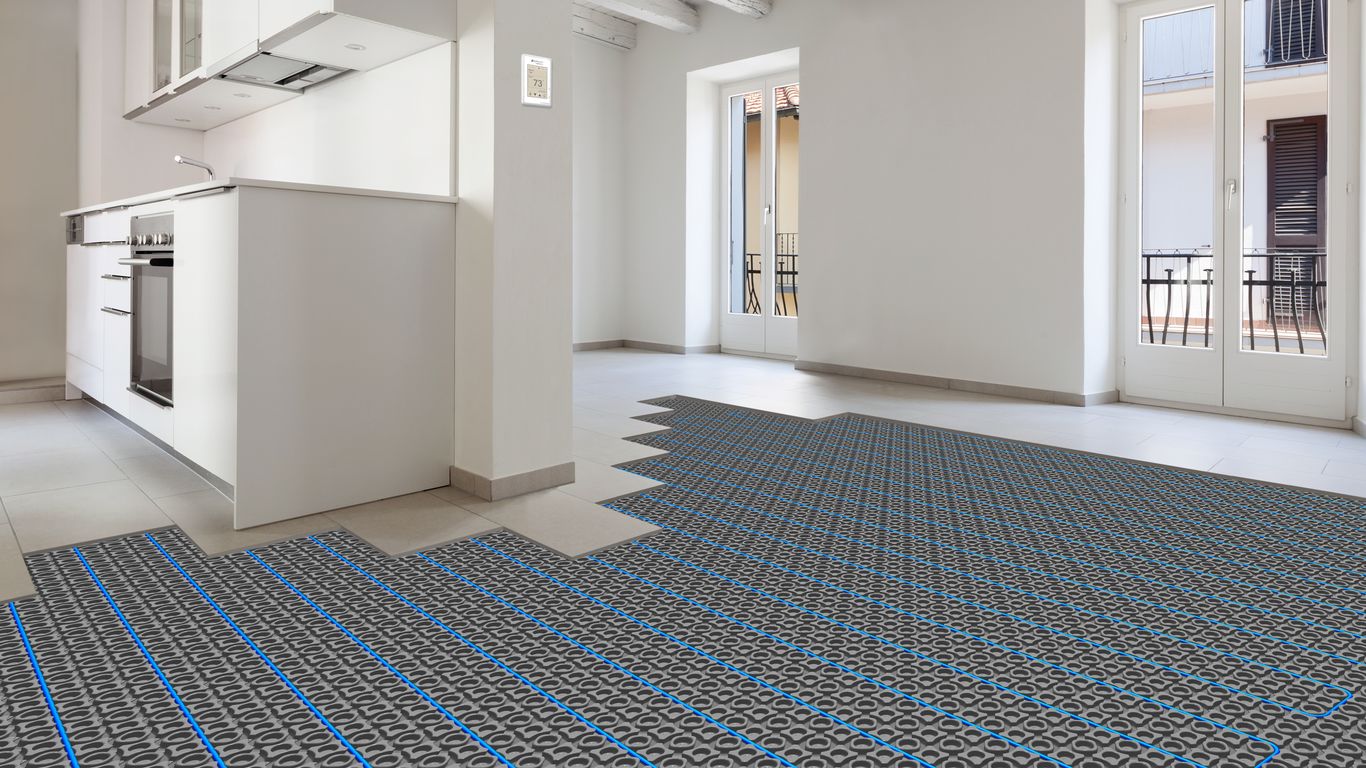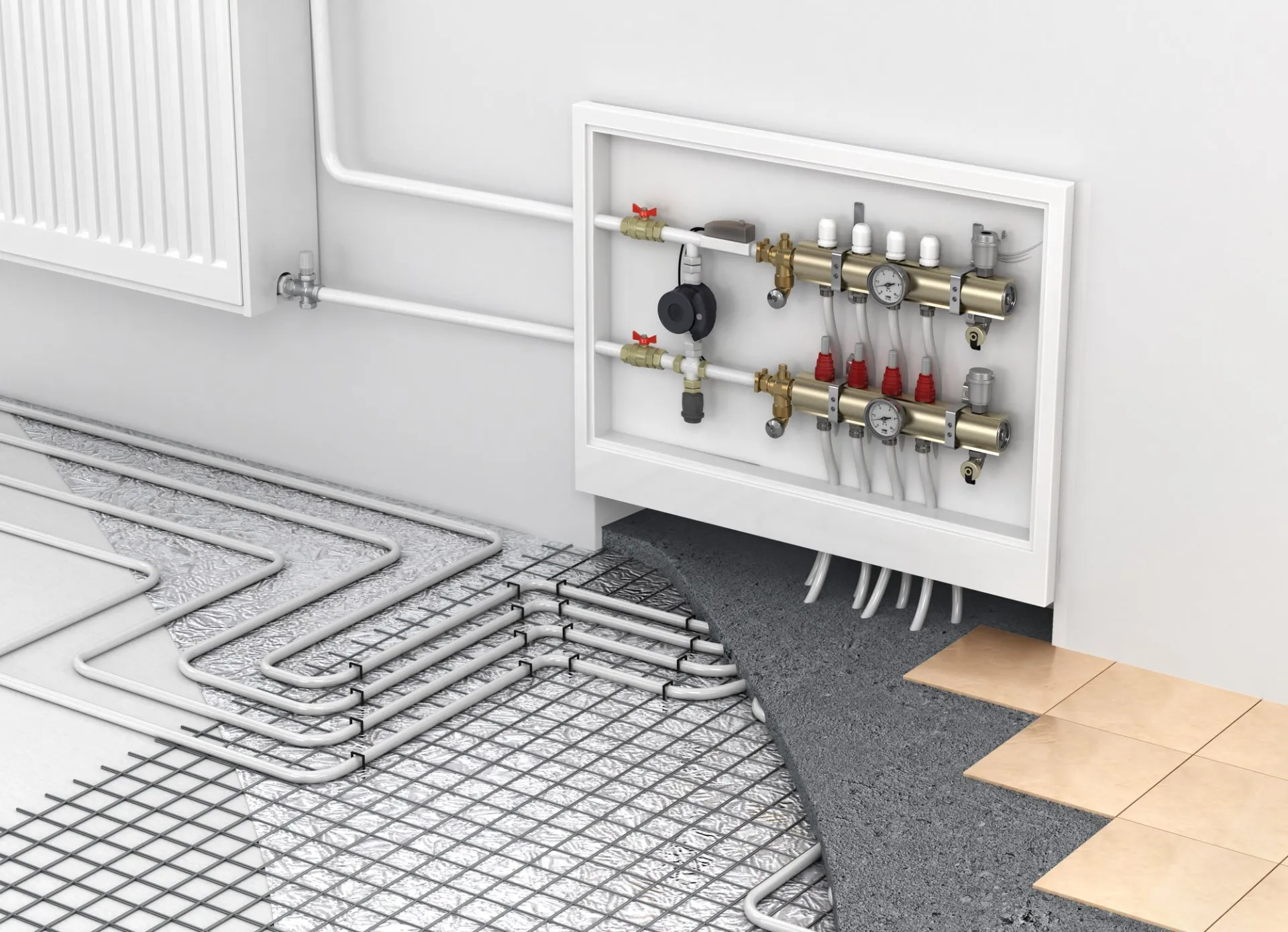Heated Floors
Heated concrete and terrazzo floors are a luxurious option for your hard surface floor coverings. Conventional underfloor heating systems use either electrical resistance elements (electric systems) or liquid flowing in pipes (hydronic systems) to heat the floor. Both types can be installed as primary heating systems or as localized floor heating for thermal comfort. Stone Design floors systems can be integrated with both hydronic and electric heating.
Electric vc Hydronic
If you want to heat a small zoned space like a single bedroom or bathroom, electric in-floor heating can be a great choice. These heated floors are powered by electric cables or mattes of electrically conductive plastic built in to the floor. Electric mattes or cables integrate well with homes that use forced air heating. When going over top of plywood sub floors, membranes are essential to control cracking in the polished concrete or terrazzo overlay.
Hydronic systems and the complex heating systems that work with them are usually installed in new construction. They are generally not a good choice for renovations unless there is to be an entire heating system overhaul.

Electric heating
Systems like Nuheat are great for thin retrofit installations where floor heights need to be kept to a minimum. These systems are usually a good supplement heating system but not designed to be the main heating source except in places that don’t get below zero degrees C much.
Hydronic heating
Hydronic heating is ideal for homeowners that do not like forced air heating, and want to keep their home at a consistent, comfortable temperature. Hydronic systems can use a single source or combination of energy sources to help manage energy costs. Heat pumps or solar panels can be integrated into these systems to help save energy costs.

Renovations
Renovations of kitchens and bathrooms are usually to refresh and renew, they do not typically include heating system overhauls. This is why electric heating systems have been so popular with renovation contractors and home owners in the past ten years.
There is a big difference in overall floor thickness with each system. Typically hydronic systems utilize conventional concrete at an average thickness of 1.5” – 6” whereas electric systems use self levelling concrete mixes, and have a total thickness (including heating) of 3/4” – 1”.
There is no ‘one fits all’ solution. When choosing heated concrete flooring systems, one needs to consider: insulation and performance, energy efficiency, weight of materials, and overall costs of both the floor finish and heating system.
